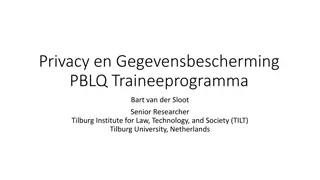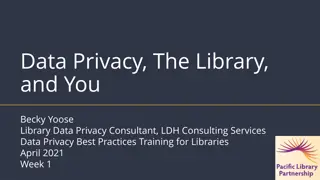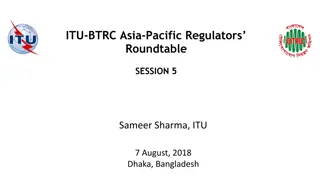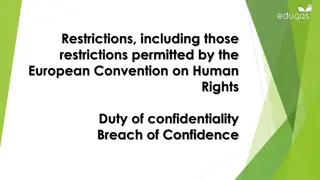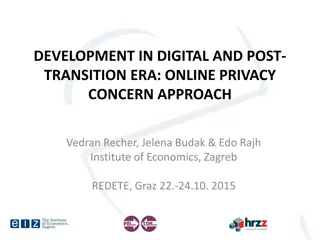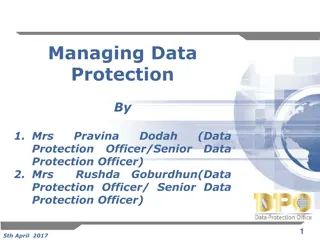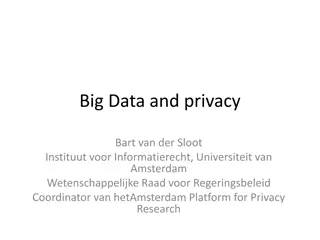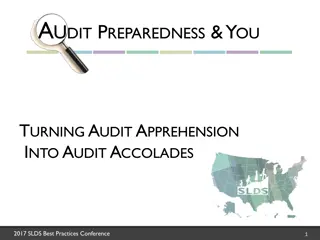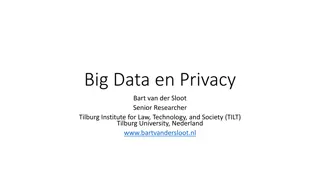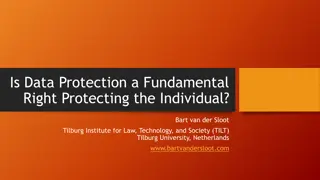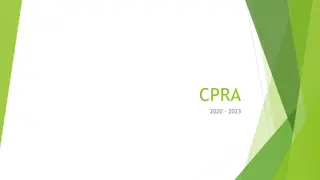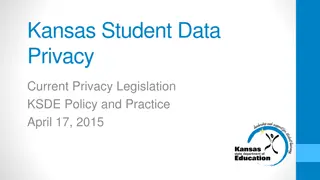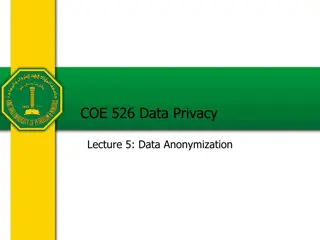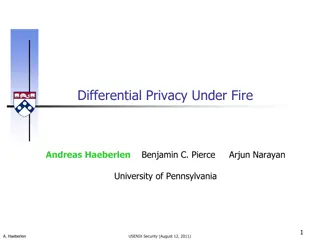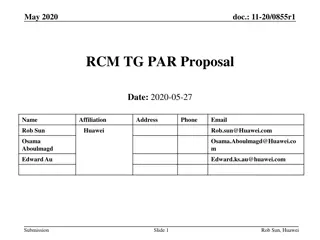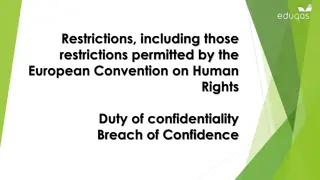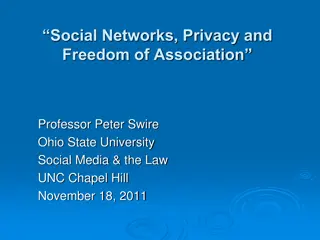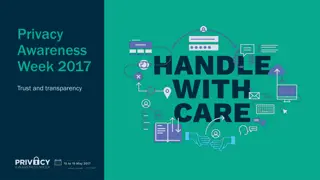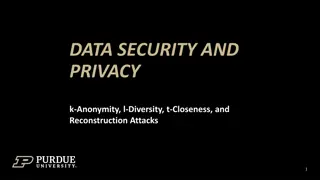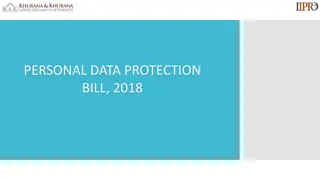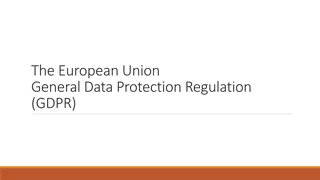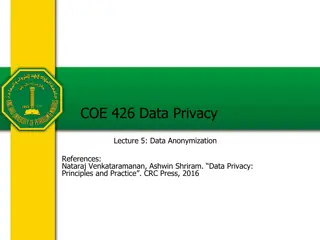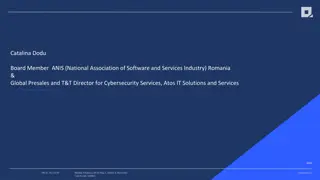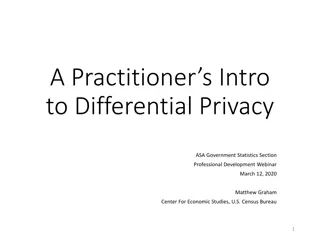Ensuring Privacy and Data Protection in the Digital Age
Privacy and Data Protection are essential in the digital age to safeguard individuals' rights and secure their information from unwarranted intrusion. This article discusses the importance of privacy, data security, and protection measures in the context of business, human rights, and legal frameworks. It highlights key aspects such as data collection, use, retention, and security practices that companies should uphold to maintain consumers' trust and comply with privacy regulations.
Download Presentation

Please find below an Image/Link to download the presentation.
The content on the website is provided AS IS for your information and personal use only. It may not be sold, licensed, or shared on other websites without obtaining consent from the author. Download presentation by click this link. If you encounter any issues during the download, it is possible that the publisher has removed the file from their server.
E N D
Presentation Transcript
Privacy in the Digital Age DRL Business and Human Rights February 2019 Open Technology Institute Ranking Digital Rights
Privacy in the Digital Age Privacy: The right to be free from unwarranted intrusion and to keep certain matters from public view. Article 17 of the International Covenant on Civil and Political Rights (ICCPR) recognizes the right to privacy Data Security: Governing how your information is collected, used, shared and managed, and having protections that uphold these decisions.
Privacy in the Digital Age Privacy from government Privacy from companies
Privacy and Security in the Context of Business and Human Rights
Data Protection There are a variety of frameworks for corporate best practices on data protection, but there are four rough categories of safeguards that trend across those frameworks: data collection, data use, data retention, and data security. Companies that collect data about their consumers need to have clear, transparent policies that address these four key data protection issues:
Data Collection What user information a company is collecting When and how they are collecting that information For example, is information collected that is not needed for the product/service to function (contacts, photographs, audio data, etc.)? As a best practice, companies should minimize the amount of data they collect and maintain transparency about their data collection practices
Data Use Ways in which a company uses the information it has collected For example, are companies using information collected from users to provide customized advertising? As a best practice, users should be notified about all ways their data is used, and have the ability to opt in or out
Data Retention How long a organization retains each type of information For example, how long are private messages between users stored in the system? As a best practice, organizations should be transparent about data retention practices, and retain data for only short periods
Data Security The process for data protection (security practices and tools) Breach notification policies For example, are companies using encryption or password protection tools to help secure their user data? What type of communication does the company use in case of data breach, and what are its mitigation practices?
Best Practices Models Different types of business models or companies can benefit from different models of data security best practices. For example, The Digital Standard is an open source methodology used to evaluate the privacy and security impacts of a given piece of IoT software or hardware. Other models include: Do The Right Thing, the GNI Principles, and Who Has Your Back? More models will be discussed in Webinar 2
Privacy from Government UDHR, ICCPR, and other international frameworks and instruments have recognized privacy as a fundamental human right. Infringements or curtailments of the right to privacy, such as government surveillance, must be prescribed by law, necessary to achieve a legitimate aim, and proportionate to the aim pursued. Laws permitting government surveillance and collection of personal information vary from country to country.
Government Requests for User Data 1) Establish clear policies for processing and responding to legal and government requests Establish a process for tracking requests and their status Review and classify requests for accuracy and validity Respond to requests using a previously established playbook Create clear guidelines for providing user notice Ensure data is kept secure Challenging requests where necessary and appropriate Provide public overview of policies and procedures
Government Requests for User Data What kinds of legal orders and mechanisms the company accepts and responds to The format in which requests must be made The scope requests must fall under User notification process
Government Requests for User Data 2) Issue regular and consistent transparency reports which highlight the scope and volume of government requests received. Benefits to the Public: Raising awareness about scale and scope of government requests Educating lawmakers Advocating for policy change Benefits to Companies: Signaling company values Easing customers fears about privacy intrusions Improving company morale
Emerging Technologies Artificial Intelligence: Used to sort and categorize large data sets, but can suffer from bias, transparency, or ethical challenges Internet of Things: Dramatically expanded data sets pose risks of data breach, exploitation, and user harm



